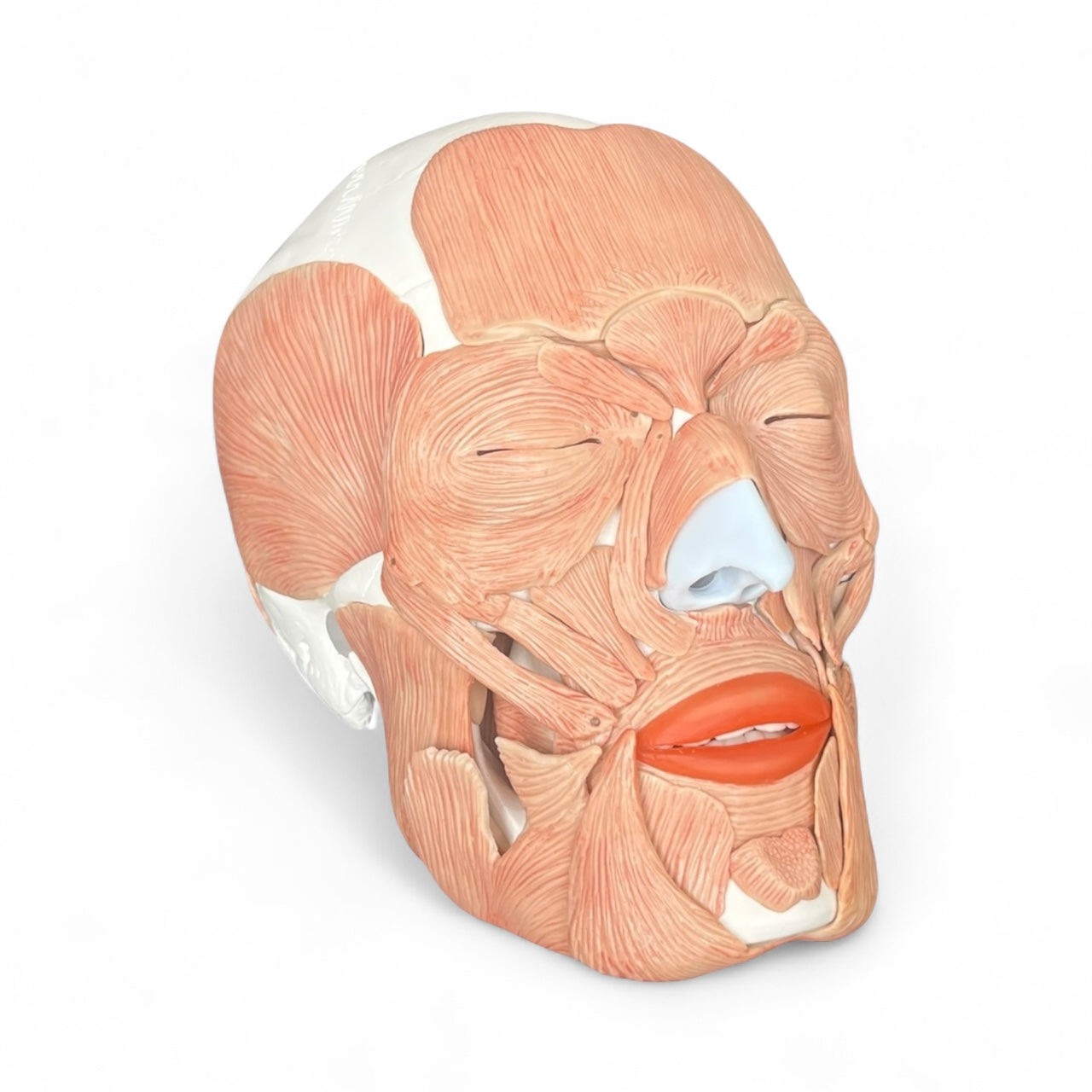Raffle for free products
All recipients of our newsletter are entered into raffles for free products. Sign up today and be in the running!

Pickup available at Frederiksberg
Usually ready in 4 hours
This complete and highly educational skull model with removable facial and masticatory muscles was developed with the advice of Ms. Hisako Takami and Prof. Ph.D. Hayato Ohshima through a commercial-academic collaboration between Bikin Lab / Iyashikuukan-fuu, MMI Co. and Niigata University in Japan. The result is a completely unique and highly detailed model of the facial musculature in relation to the skull.
The model is used, among others, by the Forensic Arts Department, Stellenbosch University in South Africa and the Forensic Research Institute at John Moore University.
The skull is molded in white plastic and comes in a size corresponding to an adult. The skull cap ("top") can be removed so that, among other things, the base of the skull (basis cranii interna) can be studied. The skull cap is held in place by small magnets and plastic pins, which are only visible when it is removed.
38 visible muscles can be removed (see images on the left). They are held in place by discreet magnets and nylon pins.
CUSTOMER SERVICE
If the product is stated as a made-to-order item, it means that the product is of such a size or such a high quality level that the product is only available on order. Delivery time may vary, but the price will always remain the same! Contact us for more information if you wish to order.
If the item is listed as in stock , it is physically located at our address in Frederiksberg and can therefore be shipped or picked up. When ordering, choose what you want.
If you wish to pick up the item, this can often take place immediately after ordering, but must be agreed with us. If you wish to have it shipped , this will be done via Postnord and often the same day the order is received.
If the item is listed as ' shipped directly from the factory ', the delivery time is usually 2-5 business days, but depends on the factory's stock status. If you want more precise information, you can always contact us before ordering.
All recipients of our newsletter are entered into raffles for free products. Sign up today and be in the running!